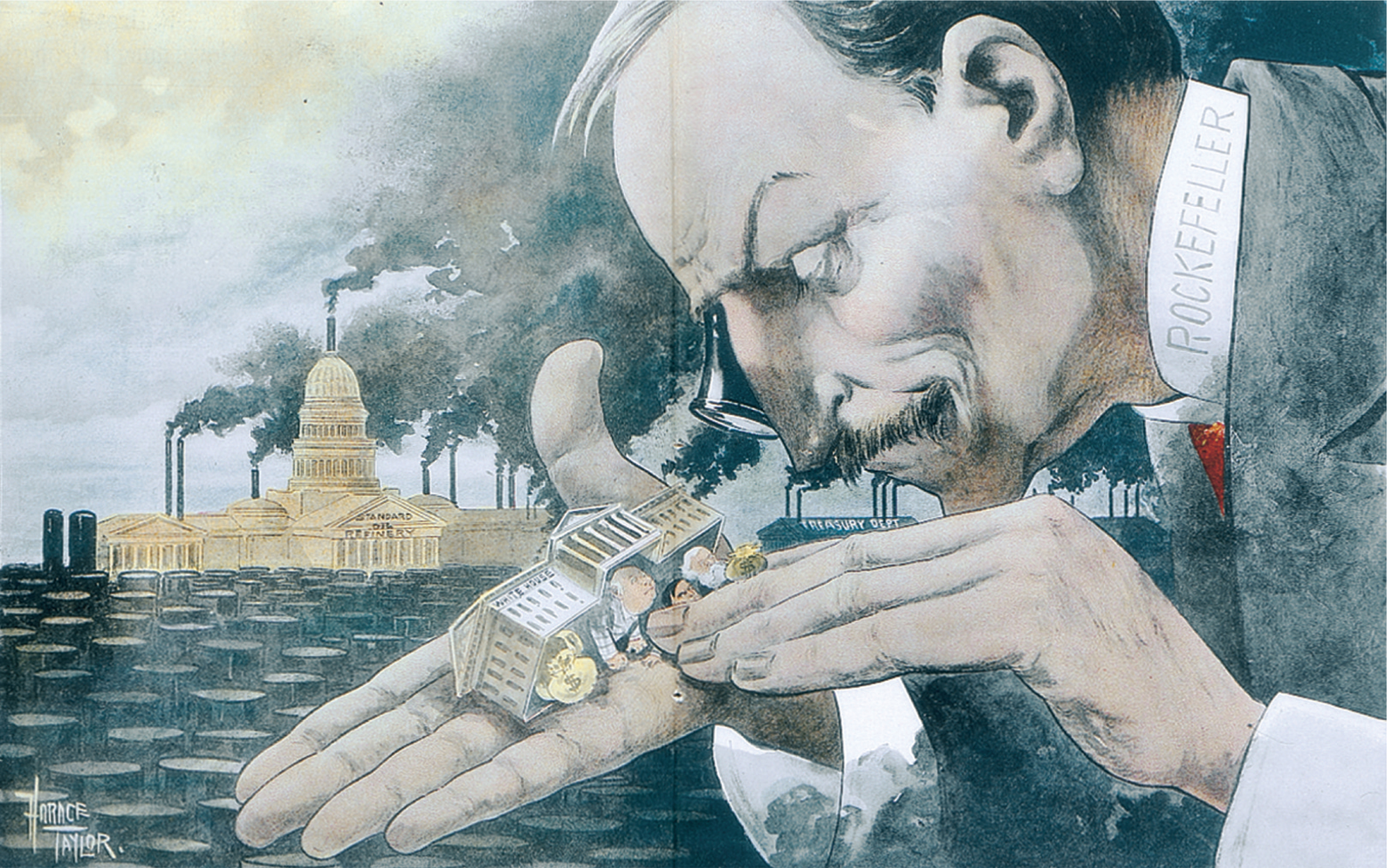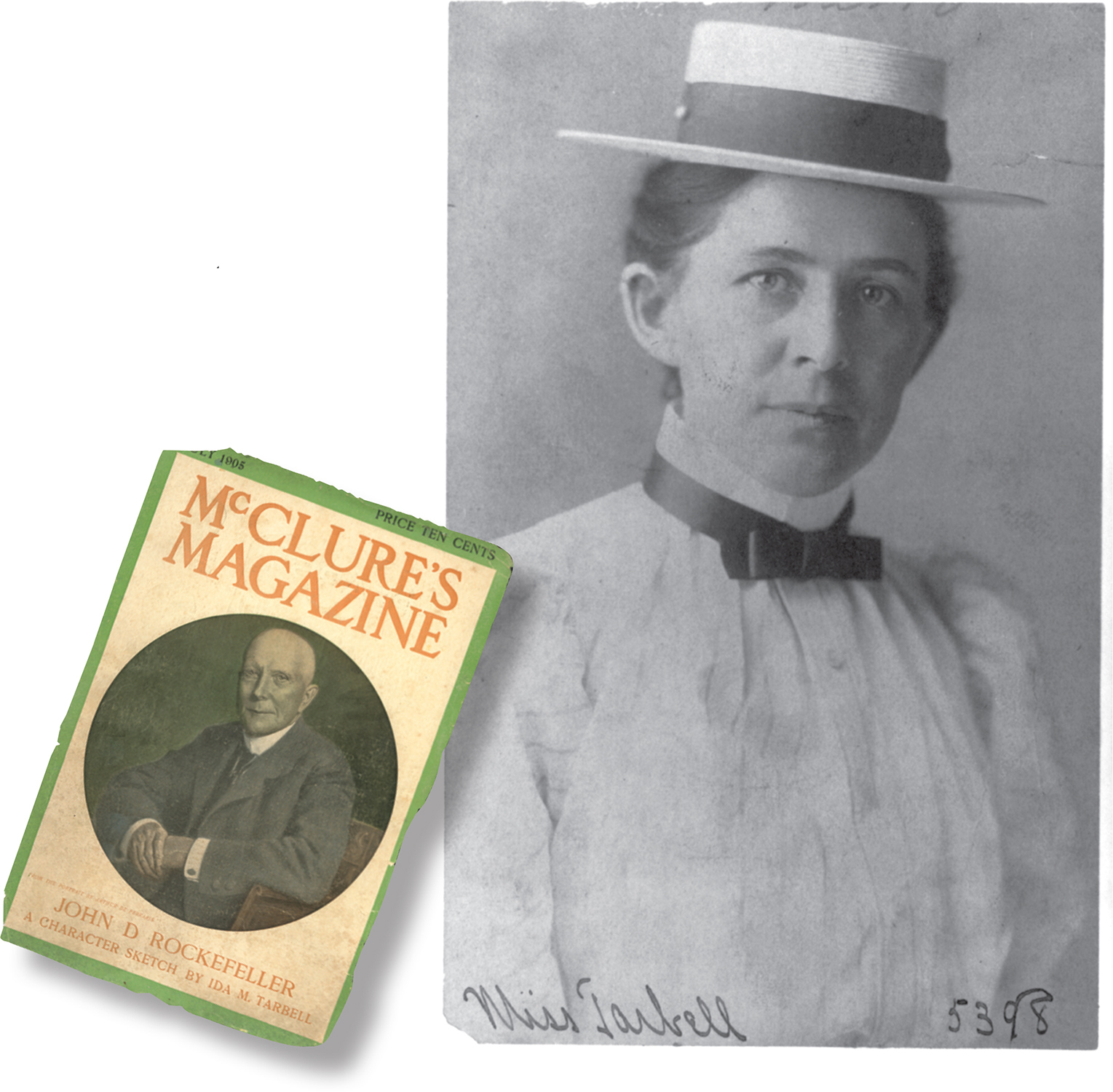The American Promise:
Printed Page 501
The American Promise Value
Edition: Printed Page 477
Chapter Chronology
John D. Rockefeller, Standard Oil, and the Trust
In the days before the automobile and gasoline, crude oil was refined into lubricating oil for machinery and kerosene for lamps, the major source of lighting in the nineteenth century. The amount of capital needed to buy or build an oil refinery in the 1860s and 1870s remained relatively low—roughly what it cost to lay one mile of railroad track. As a result, the new petroleum industry experienced riotous competition. Ultimately, John D. Rockefeller and his Standard Oil Company succeeded in controlling nine-tenths of the oil-refining business.
Rockefeller grew up the son of a shrewd Yankee who peddled quack cures for cancer. Under his father’s rough tutelage, Rockefeller learned how to drive a hard bargain. In 1865, at the age of twenty-five, he controlled the largest oil refinery in Cleveland. Like a growing number of business owners, Rockefeller abandoned partnership or single proprietorship to embrace the corporation as the business structure best suited to maximize profit and minimize personal liability. In 1870, he incorporated his oil business, founding the Standard Oil Company.
As the largest refiner in Cleveland, Rockefeller demanded illegal rebates from the railroads in exchange for his steady business. The secret rebates enabled Rockefeller to drive out his competitors through predatory pricing. The railroads needed Rockefeller’s business so badly that they gave him a share of the rates that his competitors paid. A Pennsylvania Railroad official later confessed that Rockefeller extracted such huge rebates that the railroad, which could not risk losing his business, sometimes ended up paying him to transport Standard’s oil. Rebates enabled Rockefeller to undercut his competitors and pressure competing refiners to sell out or face ruin.
To gain legal standing for Standard Oil’s secret deals, Rockefeller in 1882 pioneered a new form of corporate structure—the trust. The trust differed markedly from Carnegie’s vertical approach in steel. Rockefeller used horizontal integration to control not the entire process, but only an aspect of oil production—refining. Several trustees held stock in various refinery companies “in trust” for Standard’s stockholders. This elaborate stock swap allowed the trustees to coordinate policy among the refineries by gobbling up all the small, competing refineries. Often buyers did not know they were actually selling out to Standard. By the end of the century, Rockefeller enjoyed a virtual monopoly of the oil-refining business. The Standard Oil trust, valued at more than $70 million, paved the way for trusts in sugar, whiskey, matches, and many other products.

VISUAL ACTIVITY “What a Funny Little Government” The power wielded by John D. Rockefeller and his Standard Oil Company is satirized here by cartoonist Horace Taylor. Rockefeller is pictured holding the White House and the Treasury Department in the palm of his hand, while in the background the U.S. Capitol has been converted into an oil refinery. © Collection of the New-York Historical Society, USA/ The Bridgeman Art Library. READING THE IMAGE:According to Horace Taylor, what kind of relationship did John D. Rockefeller have with the federal government? What did the public think of it? CONNECTIONS: How much influence did industrialists such as Rockefeller exert over the national government in the late nineteenth century?
When the federal government responded to public pressure to outlaw the trust in 1890, Standard Oil changed tactics and reorganized as a holding company. Instead of stockholders in competing companies acting through trustees to set prices and determine territories, the holding company simply brought competing companies under one central administration. Now one business, not an assortment of individual refineries, Standard Oil controlled competition without violating antitrust laws that forbade competing companies from forming “combinations in restraint of trade.” By the 1890s, Standard Oil ruled more than 90 percent of the oil business, employed 100,000 people, and was the biggest, richest, most feared, and most admired business organization in the world.
John D. Rockefeller enjoyed enormous success in business, but he was not well liked by the public. Editor and journalist Ida M. Tarbell’s “History of the Standard Oil Company,” which ran in serial form in McClure’s Magazine (1902–1905), largely shaped the public’s harsh view of Rockefeller. Her history chronicled the illegal methods Rockefeller had used to take over the oil industry. By the time Tarbell finished her story, Rockefeller slept with a loaded revolver by his bed. Standard Oil and the man who created it had become the symbol of heartless monopoly.

Ida M. Tarbell, Scourge of Standard Oil Tarbell served as managing editor of the popular McClure’s Magazine, where her “History of the Standard Oil Company” ran in serial form for three years. Her revelations of the ruthless railroad rebates John D. Rockefeller used to control the oil-refining business came from Tarbell’s deep research but also from her experience growing up in the Pennsylvania oil fields where she witnessed how Standard Oil forced out its competitors. Tarbell: Library of Congress; magazine: The Ida Tarbell Collection, Special Collections, Pelletier Library, Allegheny College.

